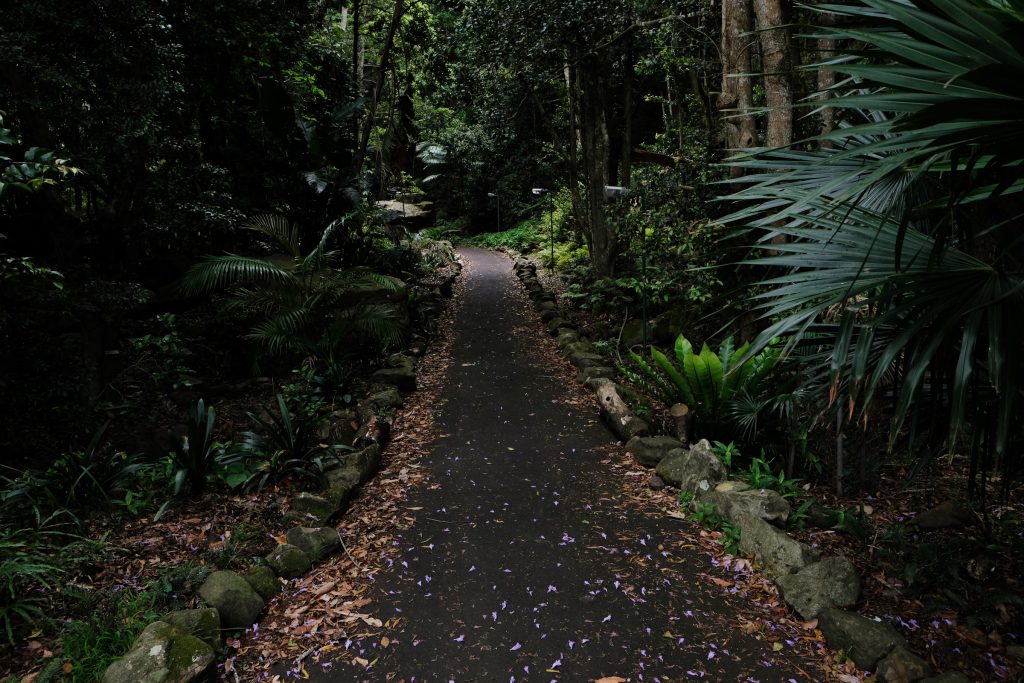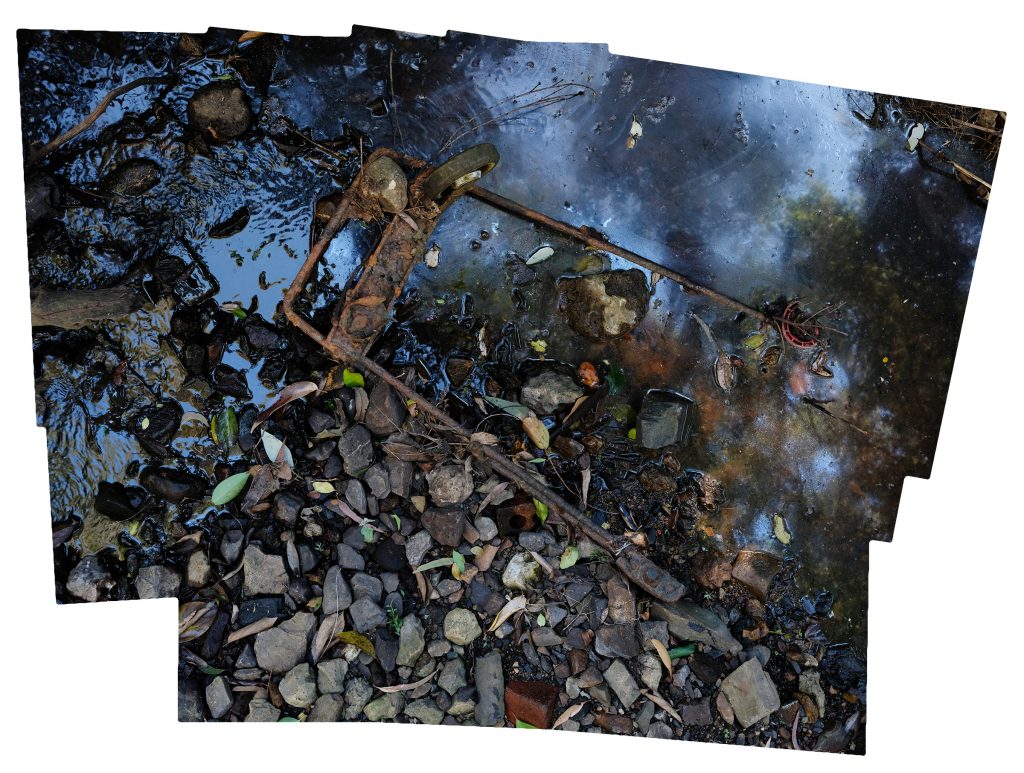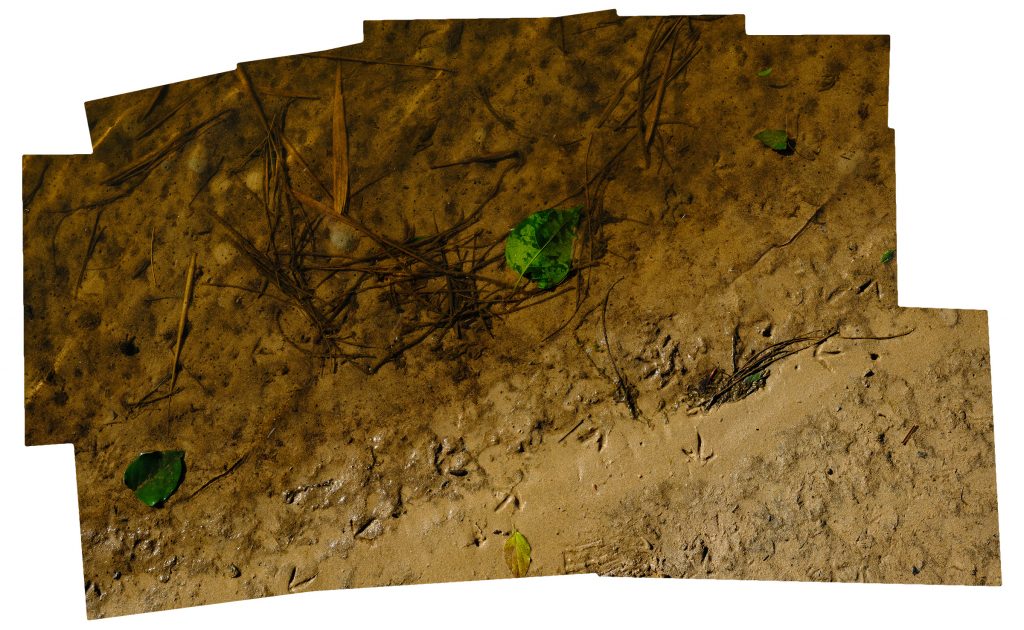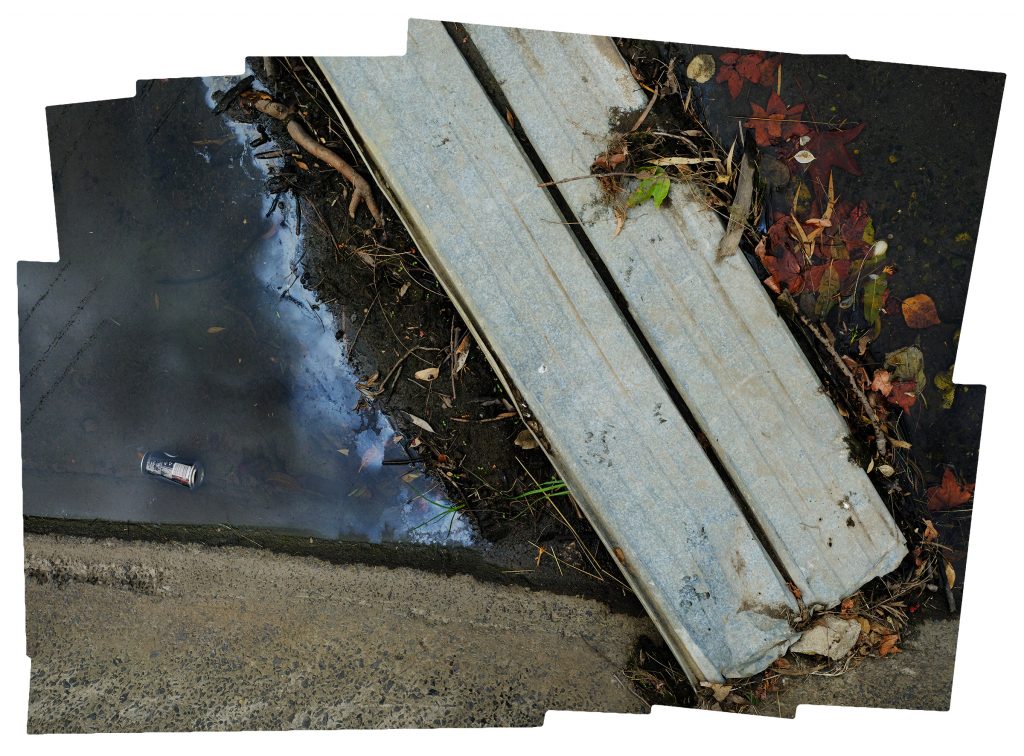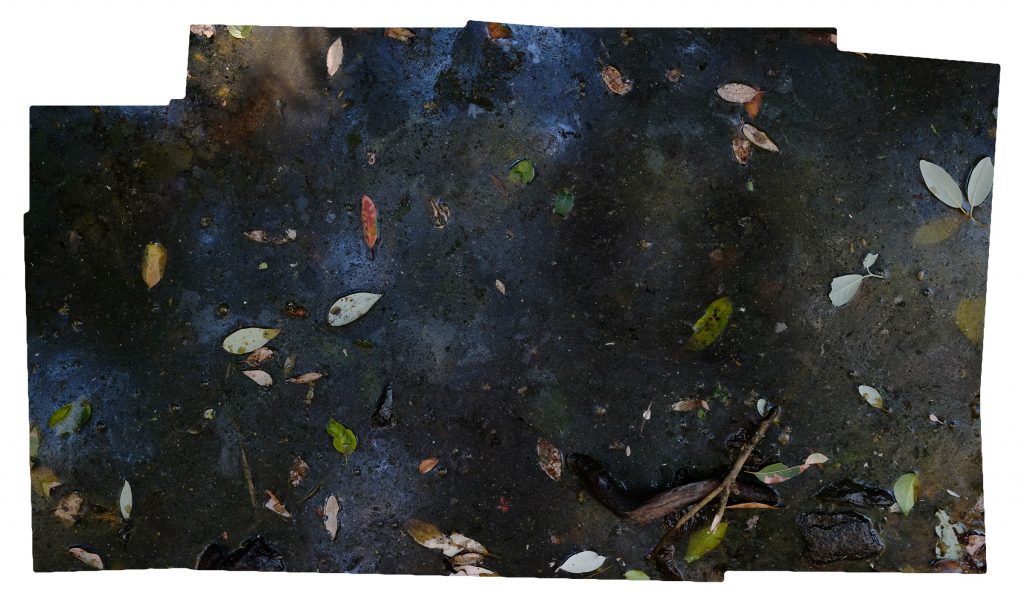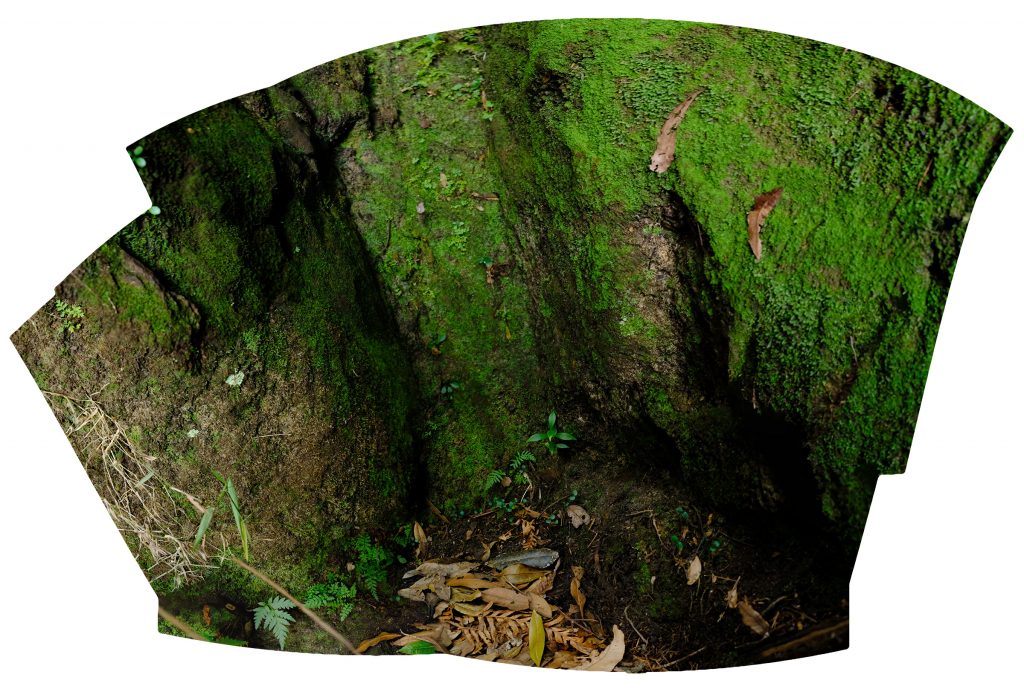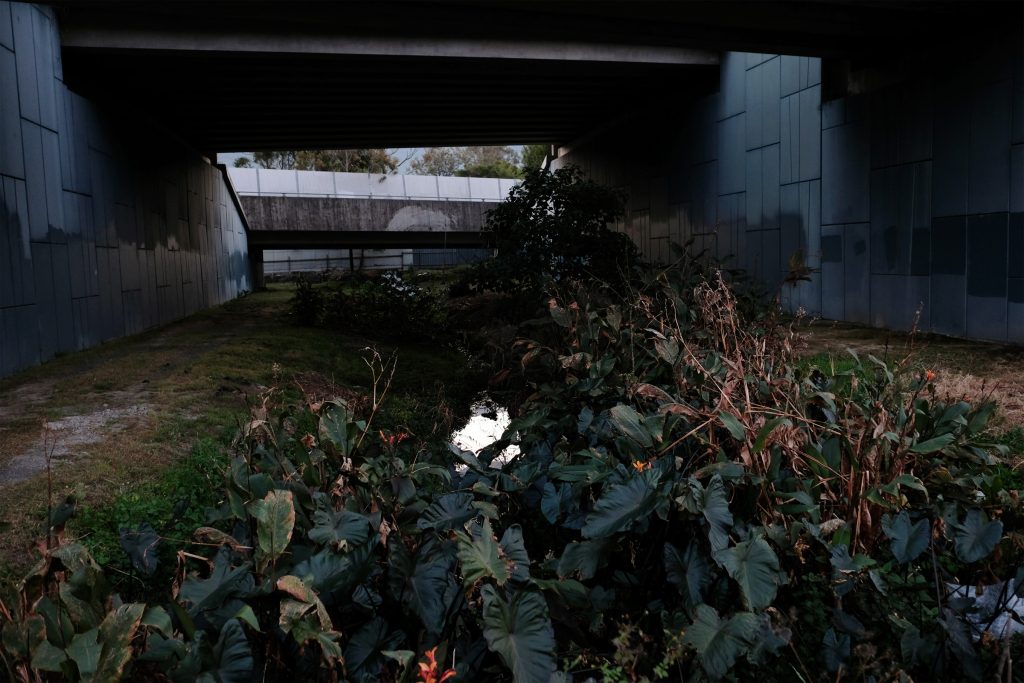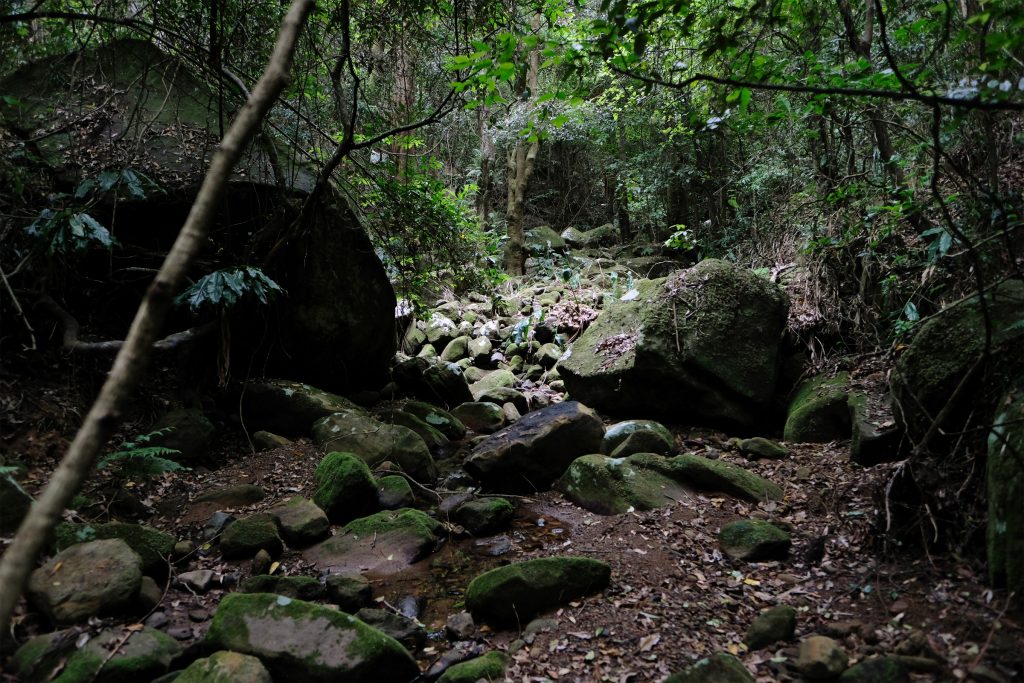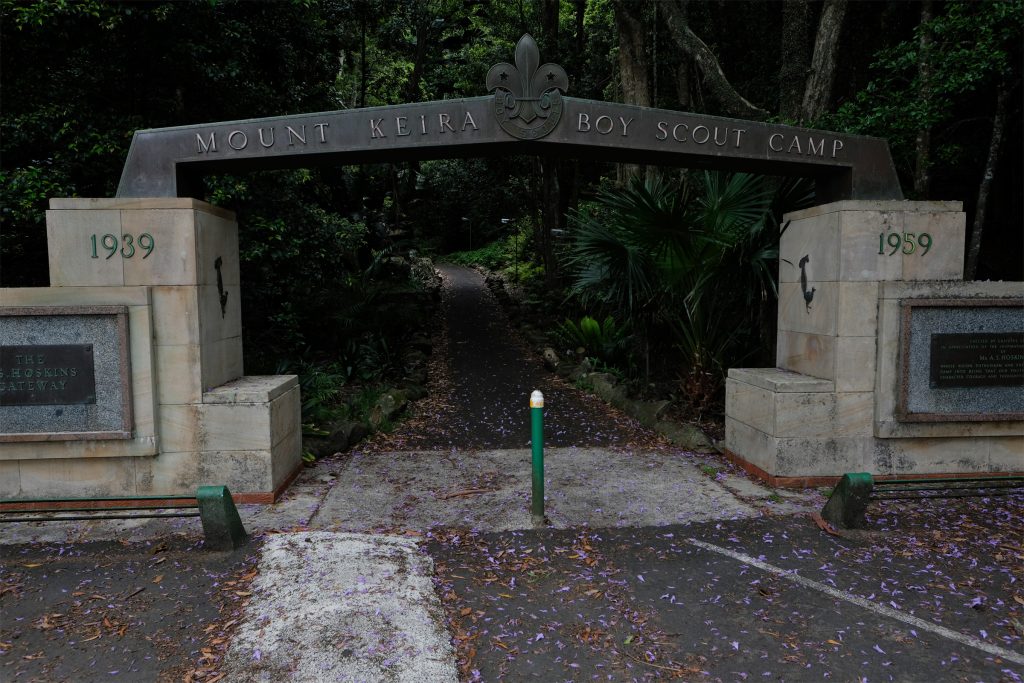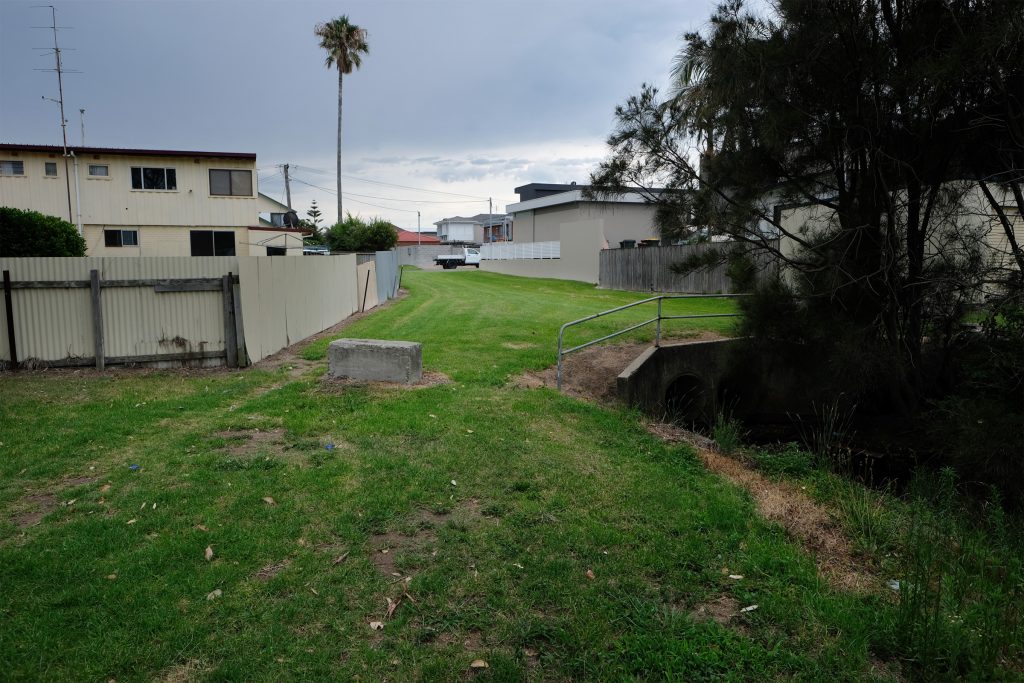Abstract
This paper suggests another way of thinking about the latent image. Instead of conceiving a dormant interiority, my interest is in exploring dimensions of relational latency. A photograph can be manifestly latent (the traditional negative) but it can also be latently latent; that is the manifest photographic image can itself conceal something. This paper considers the photograph as a charged and imperfect mediator of aspects of lived visible experience. In their inanimate stillness and silence, photographic images engage an energetics of paradox. They project an intimate relation to phenomenal experience, while also manifesting distance and gesturing towards the unseen. This relational tension is considered in terms of strands of photographic theory and the philosophy of perception and imagination. I also consider how this tension plays out in my own recent photographic work. This work explores elusive features of local creek environments, demonstrating, through a rhetoric of excess and reticence, the uncertain nature of manifestation in the photographic image.
Introduction
This essay describes an alternative conception of photographic latency, not the latency of the exposed photographic negative, but rather one that is inherent in the manifest image itself – that is focused on dilemmas of manifestation and visibility.
I argue that photography is a charged and imperfect mediator of aspects of lived visible experience. In its inanimate stillness and silence, photography engages an energetics of paradox. It projects an intimate relation to the phenomenal world, while also manifesting distance and gesturing towards the unseen. In this respect, photography is a vehicle for representing and reflecting upon fundamental conditions of perception and imagination.
In pursuing this argument, I refer only lightly to the rich body of contemporary photographic theory and even more sparingly to relevant contemporary traditions of phenomenology. Instead my interest is in exploring something like a philosophical pre-history of photography. Here my aim is less to elaborate an adequate account than to risk a provocative and plainly anachronistic one [Zielinski 2006]. In order to characterize key features of photography and to tease out how photography represents an alien play upon dimensions of human perception and imagination, I consider the ancient Greek philosopher Aristotle’s conception of the soul and the role he describes for the imagination in mediating visible experience [Aristotle 1986], as well the German Enlightenment philosopher Gottfried Wilhelm Leibniz’s rich description of our confused relation to the phenomenal world [Leibniz 1989].
In the second half of this essay I discuss examples from within my own work. I consider two sets of photographs that focus on the ground level negotiation of local Illawarra creeks. Running through metropolitan and suburban Wollongong, the waterways are themselves marginal and latent phenomena. The latency of the photographs – their various gestures of concealment and revelation – correspond to the uncertain status of the creeks.
Manifest Latency
What is a latent image? Something that is latent is concealed. It both sleeps and lies stealthily in wait. How is it that an image can both appear and be concealed at once?
The notion of the latent image conventionally involves two features: firstly, an invisible encoding in a form that is homologous to the visible image; and secondly, a potential via a supplementary transformation to become literally visible.
So within traditional analogue photography, the latent image is the exposed frame of film that encodes an obscure image on the silver halide crystals within. This manifestly latent image only becomes visible with subsequent chemical development. Digital photography, in contrast, produces no latent image. Instead of an invisible homologous tracing, there is the arbitrariness of coded digital electronic representation. There remains an aspect of latency, a potential for an image to be wrought from the digital image file, but nothing like a literal image, concealed and hidden from view.
As I have explained, my concern is not with this ordinary sense of the latent image, nor even with any notion of the photograph’s analogous or coded interiority. Instead, my interest is in conceiving a dimension of latency within the manifest photographic image. I am interested in the way that the fully-fledged and apparent photograph can nonetheless hide something.
What is it after all that a camera sees and a photograph shows? How is it similar to and different from what we see and remember? How does photography as a perceptual supplement relate to actual visible experience? A minor revelation struck when I first started learning Adobe Photoshop. The software has no actual sense of colour. It does not see colour as such. Instead there are sets of gray-scale images that arbitrarily map to the red, green and blue channels of light. Similarly, the camera as an apparatus simulates aspects of visibility, but in terms that are alien to actual human vision, not only at the technical level in terms of optics, representational medium and the like, but more significantly in terms of ordinary spatio-temporal experience.
In this sense then, photographs are visible phenomena that are shaped by an underlying blindness. Photography exists in tension with human vision. It supplements, extends, mimics, exacerbates, remediates and falls short of it. What lies latent in the manifest photographic image is not anything like a hidden inner image but instead a capacity to interrogate, realign and reimagine the conditions of perception and imagination. Precisely as an unthinking, unreflective and sleeping thing, photography discovers a dormant potential to unsettle features of phenomenal experience and imaginative recollection.
The flip side of the notion of latency, of course, is revelation, or more precisely un-concealing. The latent always contains this other moment in which the hidden suddenly becomes visible. These distinct moments of sleepy obscurity and bright vision are not so much distinctly opposed as mutually entangled and co-extensive. So, within photography, the invisible (as the blind techne underpinning each photographic image) is manifest through visibility, just as the visible (the ephemeral confusion and flow of real experience) is manifest through invisibility. It is this inter-relation between visibility and invisibility that is latent within photography.
The modern German philosopher Heidegger employs the ancient Greek term aletheia (‘unconcealedness’) to designate a particular form of experientially grounded truth. This is distinct from more formal truth – the truth of explanation and full logical analysis. Whereas the rationalist and idealist Western philosophical tradition constantly devalues the perceptually manifest, recognising its capacity for illusion and its epistemological inadequacy, Heidegger focuses on its ontological power. Aletheia, as that which the latent (lethe) holds within its pregnant oblivion, represents an opening – a crucial basis for lived action and belief [Heidegger 1993, 79-80].
Photography represents a fantastic realisation of aletheia. It shows us aspects of the world with astonishing precision and holds these images in a phenomenally alien durable form. It is profoundly convincing, and yet in the midst of this intense work of manifestation it still conceals something. It holds something latent. This is the mystery and the uncertainty of vision itself, the element of blindness in the very midst of all visibility – whether machinic or lived.
Latent Creeks
The thinking of latency links to the notion of waterways. The word ‘latent’ stems from the Proto-Indo-European root ladh (to be hidden). From this comes the Greek lethe (oblivion, forgetfulness), which takes poetic shape in the River Lethe, one of the five rivers of Hades. The river, which was also known as Ameles Potamos (the river of un-mindfulness) lies concealed beneath the surface of the manifest world. Drinking its water induces oblivion and forgetfulness – a necessary stage for the dead in their passage towards reincarnation.
The local creeks run down from the Illawarra escarpment into the sea, but hardly as ordinary serpentine creeks. Their natural curves are endlessly abbreviated and amended. They are pressed into narrow concrete channels beneath and beside suburbs, industrial areas, roads, freeways and railway lines. They are full of garbage, suffocated by weeds and positioned as abject, hidden things. Yet they reassert themselves whenever there is significant rain. In these times, the whole escarpment forest reveals its catchment nature. It becomes one with the line of creeks. The rainwater rushes down, spilling over the creek banks and spreading water, mud and floating trash across the manifest city.
The photographs that I discuss later in this essay are drawn from a current project, Walking Upstream – Waterways of the Illawarra (2014 -). This is a social practice project produced in collaboration with fellow artists Lucas Ihlein and Kim Williams. We make exploratory, conversational walks up Illawarra creeks, from their mouths at the sea to the escarpment. The walks encourage wayward and amateur processes of local discovery and ground-truthing. Despite our overall emphasis on ephemeral interaction and exploration, the project has produced all sorts of conventional and unconventional aesthetic outcomes – photographs, prints, hand-drawn maps, a website, concrete poetry, a drone video, found object sculptures, a walking guidebook, etc.
In straightforward terms, the photographs provide evidence of our walks. They document things we see along the way. Yet they also frame questions about the capacity of photography to convey aspects of ephemeral experience. My photographs particularly are deliberately reticent. They rarely show people. They depict things seen, but in a way that unsettles their phenomenological adequacy. Instead of direct and literal views, they represent imagined scenes that are redolent with the latency of both creeks and the ambiguities of photographic manifestation.
Making Sense of Photography
The photographic theory that I encountered during my undergraduate studies in the early 1980s was primarily focused on critiquing the notion of the naturalness of photographic meaning [Barthes 1977; Burgin 1982]. It insisted that photographs were social and constructed things. Photography, it was argued, was not a transparent means of representing the truth of the visible world, but rather a language shaped by particular ideological perspectives and values. The work of the French critic Roland Barthes was crucial to this. In a famous short essay, he distinguished between the denotative and connotative levels of photographic meaning – between apparently unmediated dimensions of making visible (denotation) and profoundly culturally inflected dimensions of making meaningful (connotation). For Barthes, the ideological capacity of photography lay in its capacity to confuse these two layers, to ground general ideological messages within apparently naturally depicted particulars [Barthes 1972, 42-51].
In this, however, Barthes did at least grant the possibility of space of denotation – of a form of meaning that is grounded in and modeled upon ordinary conditions of perception. Other critics took a more radical stance, insisting that even the basic features of photographic representation are shaped by historically specific regimes of seeing (single-point perspective, conventional lens transformations, etc.) (see, for instance, English critic John Tagg’s essay ‘The Currency of the Photograph’ [Burgin 1982, 110-141]). Drawing upon American philosopher Charles Sanders Peirce’s semiotic typology, they devalued any aspect of indexical relation between the photographic sign and referent, questioned the iconic status of the photograph and insisted upon key aspects of symbolic representation. This was linked to an overall critique of the cultural politics of the photographic image – of its currency as form of ideological communication.
Just before his death, Barthes returned once more to a meditation on photography, with the aim no longer to critique the photographic image, but to celebrate it – particularly, to trace out the fantasy that photography represents. In Camera Lucida, Barthes, like the French film critic Andre Bazin before him [Bazin 1967, 9-16], portrays photography as a mortuary art, a means of both preserving and embalming time [Barthes 1981, 14-15, 31-32]. Photography appears as a realm of impossible desire that attests to the ‘that has been’ [Barthes 1981, 77]. In this respect, much more than any aspect of iconic verisimilitude, it is the photograph’s indexical character that is paramount. The cause and effect chemical automatism of the traditional analogue photograph registers the light of the loved one – of people and lived events. Barthes offers a desiring, phenomenological account of photography. Photography gains meaning in its relation to memory and loss. It is cast as a strange prosthetic thing (intimate and exterior at once) that manifests life – that recalls life – through a work of alchemy and technological alienation.
Barthes describes the primary, hallucinatory power of photography – its capacity to demonstrate ‘that has been’ [Barthes 1981, 77]. But what is this ‘that’ that is authenticated? I have indicated it has a desiring charge, that it is linked to life and love, but the photograph does not actually ever recover the lived moment itself. It renders it in terms that both fantastically preserve life, while also betraying its irreducible complexity and indeterminateness. The photograph represents a mechanically determined temporal instant when life is not actually composed of instants – or at least not in these precisely delineated terms [Bergson 1910, 128]. The instant – the sense of an instant – is less a feature of experience per se than of imagination. It emerges by mulling over events, by lending them a retrospective coherence. So the ‘that’ that photography attests to is less life itself (in its confused and disjunctive flow) than life remembered and imagined.
De Photographica
Aristotle was the first to distinguish between the presence of perception and the presence of an inner world of memory and imagination. He makes this distinction as part of a larger effort to describe the nature of the soul. Aristotle conceives the soul not in the contemporary sense of some fluffy, spiritual essence, but rather as the fundamental principle that distinguishes the animate from the inanimate. In his De Anima, he describes not only the soul (life principle) generally, but also its phenomenal-psychological features. At the very outset Aristotle acknowledges that it is the ‘hardest of things to gain any conviction about the soul’ [Aristotle 1986, 126].
In this sense, Aristotle represents the soul as a latent quality – everywhere in evidence, but never itself properly manifest. In this respect, it risks confusion with other sources of apparent animated motion and engagement. According to Aristotle, the Pre-Socratic philosopher Thales argues fallaciously that magnets have souls because they make metals move [Aristotle 1986, 135-136]. Aristotle recognises in this a fundamental confusion of inanimate motion and the motion associated with living things.
And so what of the mechanism of a photographic camera, which reveals inner motions, but more importantly captures and preserves aspects of animated life? Of course Aristotle can have nothing to say about photography, but he does write of imagination (phantasia), which he defines as ‘that virtue of which we say that an image (phantasm) occurs to us’ [Aristotle 1986, 198]. Aristotle delineates the faculty of imagination to highlight the complex and indirect relation between sensible perception and thought. Imagination is centrally concerned with images, which Aristotle positions not simply as passive material impressions (in the manner of the Pre-Socratics) or entirely illusory (Plato), but as active reconstructions of sense that provide a basis for higher-level cognition. Imagination is distinguished from perception in that perception relates to things that are directly accessible to sense, whereas imagination recollects things. Imagination presents images of things that are no longer available or utterly illusory [Aristotle 1986, 196-201].
While photography tends to be conceived as more scrupulously bound to real events than Aristotle’s faculty of imagination, it does share this sense of maintaining a relation to the past – of holding on to aspects of lived experience in memory. This entails a letting go of immediate perception and a transcription of visible sensation into other inward (or prosthetic physical-chemical or digital-electronic) terms. Photography does not simply render the real, but transforms it into specifically photographic terms – terms that we can recognise, but that also appear strange and estranged from ordinary memory.
Yet Aristotle would almost certainly insist that photography is not literally a form of imagination. However much we are accustomed to the medium, however much we welcome its capacity to record and preserve aspects of the past, however much we rely upon it as a mnemonic tool and incorporate it into our daily lives, photography represents an exterior, non-living agent. It is without soul. Indeed it works to suspend animated life, to freeze it in alien state. Aristotle strictly distinguishes the three varieties of living soul (vegetative, animal and intelligent) from not only inanimate things but also the disabling abstraction of Platonic idealism. The soul is nothing separate and abstract, but is formally imminent within the living thing; form and matter – soul and body – are inextricably linked [Aristotle 1986, 156-158].
Photography, in contrast, appears as an external supplement [Derrida 1967]. It is the manifestation of an abstract logic – of phenomenological time disassembled into notional instants, of space framed via optical principles into static, decontextualised views. Photography simulates dimensions of the soul, but through means that bear no relation to anything animate.
The recognition of this space of difference need not imply a rejection of photography altogether. On the contrary, the medium’s capacity to mimic and unsettle aspects or ordinary perception and imagination most likely accounts for its continuing fascination and ongoing relevance towards reflecting upon the imponderable relationship between ephemeral lived experience and the phantasms of memory and imagination.
Leibniz: Photography and Sensible Confusion
In order to characterise photography’s disruptive relation to perception and cognition, it is worth briefly considering a prominent early modern philosophical model of how these processes work. Leibniz’s conception of the interaction between sense, imagination and understanding has peculiar contemporary relevance in its insistence upon the value and complexity of lower-level affective-perceptual psychological processes [Barnouw 1993].
Whereas the founder of modern philosophy Rene Descartes argues for a fundamental dichotomy between mind and body [Descartes 1911, 27], Leibniz describes a complex and nuanced interaction between the two. The senses are positioned not simply as a field of error and illusion, but as an important basis for the emergence of higher-level orders of understanding. Sensible perception is characterised by an irreducible multiplicity of minute perceptions that cohere into larger holistic impressions – images, sounds, tastes, smells, pleasures and pains. Perception is continuous, multi-layered and driven by desire. It can be obscure or clear, but is always con-fused (it links together a multiplicity into a perceived, though ephemeral whole) [Leibniz 1989, 2].
Drawing from the Aristotelian tradition, Leibniz describes a series of mediating psychological layers between the realms of sensible experience and rational understanding. Most significant is the layer of imagination, in which the sensible world is recalled, reconstituted and reconceived. Imagination involves memory, but also more actively anticipation, analogy and concrete differentiation [Leibniz 1989, 187]. Earlier, the English philosopher Thomas Hobbes refers to the imagination as a realm of decaying sense, which swiftly loses its intense relation to any given perceptual moment as time passes [Hobbes 1985, 88]. In contrast, Leibniz, describes a more active space in which lived experience grows increasingly coherent and susceptible to analysis.
Nonetheless, despite his keen interest in the senses, Leibniz, like Descartes, ultimately regards the sensible as an ’occult’ field [Leibniz 1989, 186]. We can recognise, for instance, the colour red, but we know nothing distinctly of how it is caused, exists or is experienced. We cannot define it precisely. While it is clearly apparent, we cannot delineate its distinguishing marks. In this manner it falls short of philosophically sound knowledge [Leibniz 1989, 186-187]. Still, it is only by engaging with sensory phenomenon – by being literally and imaginatively immersed in this space – that we can gradually begin to discriminate and to recognise the like from the unlike, the general from the particular, etc. Leibniz argues then that abstraction and logical analysis evolve through an interaction with sensible experience, gradually leading to the recognition of properly higher-level and distinct truth [Leibniz 1989, 191].
The Leibnizian phenomenological and epistemological schema provides a useful reference in considering how photography unsettles neatly hierarchical notions of sensible experience, imagination and analytical thought. Photography represents a novel, disruptive thing – an odd combination of the normally separate faculties of perception, imagination and intellection. It breaches experiential continuity, engages with abstract mechanical time, renders a coherent image from strands of lived confusion, pursues detail not holistically but via endless technical differentiation and through the agency of geometrical logic, physics, chemistry, digital electronics, etc., as well as somehow rendering the particular via general means, but in a form that never existed as such, that can never have existed in this very clear and far too distinct state.
In doing all this, however, photography responds to our desire for an image that exceeds the conditions of ordinary perception and imagination – that mimics and extends them – and its work of mediation is perhaps ultimately no more alienating than any given layer of human psychological mediation. Photography appears as a prosthetic medial possibility that we are willing and compelled to adapt to – in the same manner that we cannot step outside our given sensory apparatuses or psychological affordances. Yet if photography emerges as distinct and meaningful, it is precisely in terms of its complex relation to ordinary human modes of seeing, remembering and image-based communication. It is not what it shows or hides within itself that matters, but everything that is implicit in this showing and hiding. The conventional latent image is less important than the unseen dimension of the explicit one, which emerges in the relational play between the photograph and ordinary vision.
German media theorist Rudolf Arnheim [1983] provides a very useful summary of the main phenomenological differences between the experience of reality and the experience of photography and film. Arnheim argues that it is by falling short of a complete and adequate representation of reality that photography and film discover their aesthetic potential. It is through limitation and restriction – the reduction, for instance, of 3 dimensions to two, the imposition of the frame, ‘the absence of the space-time continuum’ [Arnheim 1983, 26] and ‘the absence of the non-visual world of the senses’ [Arnheim 1983, 34] that the particular formal-aesthetic parameters of photography and film emerge. I would only add that it is not only by falling short of phenomenological reality that photography and film take shape, but also in the sense that they exceed our capacities of seeing and recalling reality. They represent a fantasy of extended perceptual and imaginative possibility just as much as as one of inevitable limitation. They have the capacity to represent the accidental details of the world in incredible detail, as well as to preserve – to an extent that answers to some level of profound desire – the ephemerality of things, faces, places and events. So there is an element of both restriction and extension. For my purposes, this space of unresolved difference shapes a relational field. It informs a dialectic between photograph and viewer, between their different perceptual, imaginative capacities. The latency of the photograph, as I have described it, represents a friction between two modes of seeing and remembering, as well as two modes of blindness and envisioning.
Creek and Escarpment Photographs
If I turn now to a discussion of my own photographs, it is not with any wish to argue for the special significance of my images, but rather because they offer me a privileged perspective.
As the person who took these images, I have a clear sense of how they relate to the particular circumstances in which they were obtained. This enables me to more pointedly recognize their dimension of imaginative artifice. So my concern is less with interpreting these photographs, in making sense of them, than in positioning them – in describing their emergence and their complex relation to seeing, remembering and imagining.
The first set of photographs, Creek Samples, was included in the Walking Upstream: Waterways of the Illawarra exhibition, Wollongong City Gallery (November 2017 – February 2018). It provides sampled views of Fairy Creek. The second, Points of Disappearance, is an ongoing project that documents points at which the various local creeks can no longer be negotiated.
Creek Samples
A set of composite photographs provide a selection of particular, but representative, views of Fairy Creek as it winds up from its mouth at North Wollongong beach, through Puckey’s Lagoon, under roads and railway lines, and through suburban culverts and marginal bush to the southeastern flanks of Mt Keira. The photographs aim to evoke the material texture of the creek line, in all its complexity – as sandy shore, muddy and polluted edge, concrete drain, beleaguered section of pretty creek, lantana-infested gully, and mossy escarpment soak.
The photographs suggest something of the experience of walking up the creek – the sense of minor discovery that ground-truthing involves. Since the experience itself is inaccessible the scale and the high resolution of the photographs serve as a metaphoric means of conveying elements of close, intimate attention.
My original plan was that the images would be one to one scale samples – with the size of each print corresponding to a one metre square section of creek line. My process ended up being less precise than this, but an emphasis on representing the creek line at human, perceptual scale remained. In this sense, the images assert ‘this is what was seen’. The photographs pursue a frozen hyper-visibility in order to summon – via indirect means – aspects of direct experience. This rhetorical excess plainly marks a limit. It distinguishes that which relates to experience from that which is necessarily alien to it. No matter how manifestly these images reveal intimate creek line details, they also latently stage the exteriority and difference of photographic vision.
The images are the product of a waywardly objective process. They represent samples of creek line and are themselves composed from a grid of individual photographic samples.
At the global sampling level, I selected particular patches of creek line not at regular, properly scientific intervals, but rather in terms of their roughly representative character.
At the level of the individual image, each photograph is a composite stitched together from a grid of 12 or 16 photographic samples. Rather than employing a precise tripod mechanism to obtain the grid of images, I estimated the grid through an inexact embodied procedure. I became a sampling mechanism. The framing of each photograph relates to the length of my arms and their range of motion in relation to a fixed stance.
I made no particular effort to look through the viewfinder (or at the viewfinder screen) while taking the photographs. Instead, I simply did my best to perform an approximate but tenably accurate process of grid-based acquisition.
Similarly, the stitching process (in Adobe Photoshop) was significantly mechanical. While I had conceived the possibility of an image, I had never actually seen it and was unable to predict the final result. Rather than a deliberately composed photograph, the image had an accidental quality. The photograph was not simply the product of seeing, but emerged, very precisely, as the visible mark of the unseen.
This sense of unseen acquisition was very evident in terms of the many visual errors and accidents that happened during the stitching process. Rather than a conventional panorama I was attempting something closer to a flat bed scan of sections of ground. While stitching software assumes a consistent viewpoint, my array based method produced a set of multiple and distinct viewpoints. My deliberate Parallax error produced everything from small errors in merging lines, volumes and textures to a complete failure of the software to stitch the photographs together. It took some care then to produce the illusion of a seamless image. Apart from selecting an appropriate lens and ensuring good overlap between samples, there was also a need to doctor the final composite – to clones bits and pieces from here and there to sustain the illusion. The composite photographs emerge then as artificial constructs, taking shape from no coherent image – no coherent experience of seeing.
Although I selected seamless results, I deliberately left the irregularly stitched boundaries visible. My aim was both to manifest an integral illusion and highlight the dimension of artifice and the juxtaposition of systematic method and bodily accident. In this respect, another latency is revealed. The images play upon and exacerbate the complex relationship between the phenomenological and the technical in photography. Rather than working to obscure this relationship, or render it neatly seamless, they explicitly demonstrate strands of tension and perverse alignment.
Points of Disappearance
I imagined taking photographs at the exact points that creeks disappeared. However, our walks up local creeks very rarely end at anything like an ideal source. Apart from the many occasions that we simply grow tired and turn back, there are also many times that we encounter barriers (private property, walls of impassable weeds, narrow and subterranean drains, etc.). So while I had envisaged taking photographs at the points at which creeks literally disappear (most likely somewhere high up in the escarpment), I quickly realized that these points were elusive and that they furthermore can take multiple forms. While still drawn to this concept, I came to recognize a more complex scenography of endings; some related to features of the creeks themselves, others to how the creeks have been managed, and others again to the nature of our capricious ramblings. The creeks disappear not only as they blur imperceptibly into a more general catchment, or when they abruptly end at a drain, but also when we drift off-track and decide to proceed no further.
Escarpment Boulder
I have walked up Fairy Creek many times. It is a very complex creek – really an assemblage of small tributaries running off the southern flanks of Mt Keira. Still, despite its elusive confusion, I was determined to pursue Fairy Creek to some point of origin.
Selecting one gully, I discovered that all trace of the creek suddenly disappears in the last hundred metres or so below the Mt Keira cliff line. What had just before been a clearly marked steep creek line becomes a more open sweep of forested land with a large boulder sitting right where the creek should be. The photograph documents a scene of fairly unremarkable escarpment rainforest. There is nothing sublime about it, nothing that signals a threshold, nothing that signals invisibility per se. Removed from its experiential context, essentially and necessarily removed from the flow of experience, the photograph can only depict the plenitude of a non-descript forest scene. The photograph represents all the manifold details of leaves, moss and rock, but this is plainly insufficient, or possibly excessive, given that there is nothing to see, given that the state of the creek’s disappearance eludes marked visibility.
So we can search fruitlessly for signs of the creek, or possibly (taking a cue from the Points of Disappearance title) obtain a sense of the imperceptible continuity between creek and forest catchment. The contours of a latent, indistinct and indeterminable creek become notionally apparent precisely in that they cannot be seen. The specific quality of photography – its capacity to render visible – becomes then a rhetorical device for pointing to a dimension of phenomenal reality that escapes visibility altogether.
Memorial Drive
Collins Creek begins just to the north of Collins Rocks in East Woonona. This headland has minor fame as the place where Captain Cook, in 1770, attempted to make a first British landing on Australian soil. Cook came within metres of the Woonona shoreline in a small rowboat, but was unable to land due to heavy surf. He was forced to retreat to his ship and sail further up the coast to land at Kurnell in Botany Bay. Collins Rocks and Collins Creek have a place in our colonial history then in relation to a non-event. For Cook and his crew, the spectacle of this shoreline represented a point of disappearance. There was an intractable gap between the tantalisingly close shore and any possibility of proceeding.
But in any case, leaving this history of mingled appearance and disappearance aside, Collins Creek runs for a kilometre or so inland before it passes under Memorial Drive and then beneath a fence into private property, not reappearing again until after the Princes Highway. In this photograph the creek is still visible, strongly reflecting the dusk sky and framed by elephant ear and native ginger. In this sense, the photograph depicts less a point of literal disappearance than a last shining glimmer of visibility.
Yet the disappearance it documents is less the banal impossibility of proceeding beyond the distant fences, than a more poetic sense of loss. Disappearance is metaphorically evoked by the gathering darkness, the gloom of the open tunnel and the creek’s status as nothing more than a small patch of brightly fading light. This photograph works to prefigure a point of disappearance – to render it palpably imminent.
Clearing
I had driven up to Byarong Creek Park late in the afternoon with a thunderstorm threatening. The air crackled in anticipation. I walked down the track into the Girl Guide camp and turned right at the creek, heading across low boulders into the bush. I had never been up this section of creek line before. There was no track and the creek showed no sign of disappearing. If anything it became more pronounced and chock full of boulders, so I was regularly forced to detour up into the surrounding forest, picking my way through its leafy detritus and vines. Large drops of sparse rain were falling. The forest was dark and the sky flickered and rumbled.
Eventually I reached this place that was not actually the end of the creek, but seemed to suggest it. This place could be taken for the end of the creek. There was a transition from the muddy creek bed to a much tighter set of boulders. The darkness of the forest fell away and the path ahead was less clear. So I took this photograph depicting both the darkness of the creek and its imaginary conclusion. A step further, however, and the coherence of the creek returns. The path ahead becomes obvious. This moment of obscurity renders a paradoxical image – clear in its delineation of an apparent conclusion, but focused actually on an obscurity that is inevitably unmarked, that cannot properly be imaged.
Camp Gate
Having failed to discover the point at which Byarong Creek disappears, having learned instead that the creek line only becomes more obvious and with steeper banks on each side – I looked for some means of escape.
I knew that the Boy Scout camp lay somewhere up the way I was heading, most likely close to the creek line, but had no sense of where precisely. While making a detour on the Western side of the creek, I noticed evidence of a clearing high up on an opposite slope. I descended back to the creek and then up via a steep ridge to the edge of the clearing, which was blocked by a wall of lantana.
Nonetheless, I could see power lines running overhead and a power pole just a few metres further to the south, so I skirted around the edge of the lantana to a small gap beside a boulder. Pushing through, I found myself suddenly in the Boy Scout camp parking lot. Relieved to be out of the forest, I walked across to the fancy camp gate, with its sandstone veneer, embossed lyrebirds and massive metal superstructure. I took a photograph.
What interested me, apart from the gate itself, was the narrow asphalt path, with its neat boulder edges and small electric lights. It was as though the limits of the creek stood revealed as a whimsical fantasy. There was a path – an easy, well-lit path – that led to whatever it was that I was seeking. This displacement, this mirage, was the point of disappearance – the point at which I wandered away from the creek to discover its impossible source.
Drain
An unnamed creek flows inland from the middle of Woonona beach to a small lagoon. It then runs beneath a small bridge and makes a single serpentine bend before abruptly ending at a drain near houses. Google Maps shows no further trace of the creek, and I have been unable to follow it further on foot, or even to assess where it may have once been on the basis of topography or traces of a riparian zone. The creek simply vanishes.
It is curious, however, that this short stretch of creek appears very creek like. It is full of dark, clear water and bordered by a good stand of casuarina trees. I can only wonder at the extensive drain network that must run beneath this section of Woonona – somehow managing the flow of water during periods of heavy rain.
This photograph portrays a point of prosaic disappearance. The creek is less concealed than repressed entirely. It is managed to such an extent that it loses all latent potential. There is nothing uplifting here, nor even especially poignant. The photograph depicts disappearance as such – in its abject banality and with such literalness that we scarcely recognize any latency at all.
Finally, the notion of ‘points of disappearance’ clearly represents an elusive visual-ontological desire. As though such points could distinctly appear – particularly as they focus on an awareness of the invisible. This paradox of imagining that the indistinct and invisible can be represented in distinct and visible terms aligns closely with the fascination of photography. Indeed I would argue that the thinking of ‘points of disappearance’ emerges in close relation to the photographic imagination – to the effort to distinctly render and preserve phenomenal circumstances that no longer exist, and that only imaginatively and retrospectively take shape as anything resembling an image.
Conclusion
I have insistently made a single point in this essay. I have argued that the photographic image has a relational latency – the manifest image draws out fundamental aporias affecting both phenomenal and photographic vision. I have made this argument in relation to a deliberately diverse and wayward selection of materials and through an examination of examples from my own recent work. I have risked and pursued obvious anachronism in order to find effective means to articulate what photography continues to mean to me. In doing this I have no doubt over-simplified. I have largely ignored the more complex integration of elements of the photographic within contemporary life. Endlessly available, evident across numerous platforms and contexts, the sense of any lingering sense of a friction between phenomenal reality and the photographic image can perhaps dwindle or emerge in new and less emblematically differentiated shapes. Perhaps, but I would argue that the sense of latency remains even as our notions of vision and imagination are transformed. At the heart of this is a fundamental issue: phenomenal experience, despite its ontological force, is necessarily obscure. It is not fixed in memory or rendered neatly as a form of knowledge. It escapes and can only be recovered, but never adequately, via a work of mediation (or imagination). In these terms, all media, whether photographic or otherwise, play on this tension – this doubled sense of difference and recognition.
References
- (1986). De Anima. Penguin Books, London.
- Arnheim, R. (1983). ‘Film and Reality’ in Film as Art, London: Faber & Faber. 17-37
- Jeffrey Barnouw. 1993. The Beginnings of “Aesthetics” and the Leibnizian Conception of Sensation, in Paul Mattick (Ed.) Eighteenth-Century Aesthetics and the Reconstruction of Art. Cambridge University Press, Cambridge. 52-95
- Roland Barthes. 1972. The Rhetoric of the Image, in Stephen Heath. (Trans.). Image-Music-Text. Fontana Press, London. 32-51
- Roland Barthes. 1981. Camera Lucida. Hill and Wang, New York.
- Geoffrey Batchen. 1999. Burning with Desire. MIT Press, Cambridge Massachusetts.
- Andre Bazin. 1967. What is Cinema? (Vol. 1). University of California Press, Berkeley. 9-16
- Henri Bergson. 1910. Time and Free Will: An Essay on the Immediate Data of Consciousness. The Macmillan Company, New York. Available online at: https://archive.org/details/timeandfreewilla00berguoft
- Victor Burgin. (Ed.) 1982. Thinking Photography. Macmillan Publishers, London.
- Jacques Derrida. 1967. Of Grammatology. John Hopkins Press, Baltimore, Maryland
- Rene Descartes. 1911. Meditations on First Philosophy, in The Philosophical Works of Descartes. Cambridge University Press, London. 1-32
- Gottfried Wilhelm Leibniz. 1989. ‘To Queen Sophie Charlotte of Prussia, On What is Independent of Sense and Matter, in Philosophical Essays. Hackett Publishing Company, Indianapolis and Cambridge. 186-192
- Martin Heidegger. 1993. Selection from Being in Time in Martin Heidegger: Basic Writings. Thames & Hudson, London. 41-87
- Thomas Hobbes. 1985. Leviathan. London: Penguin Books
- Lewis Mumford. 1934. Technics and Civilisation. Routledge, London.
- Siegfried Zielinski. 2006. Deep Time of the Media: Towards and Archaeology of Hearing and Seeing by Technical Means. MIT Press, Cambridge,Massachusetts.

